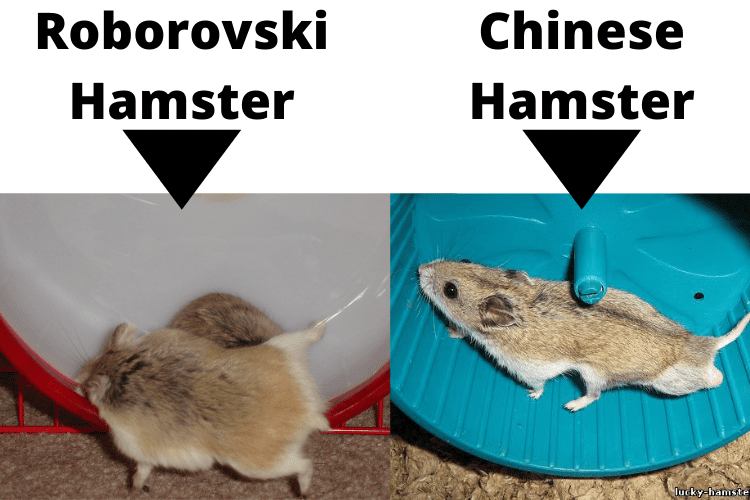Hamsters might be easy to care for due to their simple diets and generally low-maintenance nature. However, there is so much about these animals that people don’t know. For instance, if you asked a random sample of hamster owners to, without looking, tell you if their hamster has a tail, I can guarantee you that a good amount of them could not give you the answer.
It might seem like a weird question, but it’s one that is frequently asked. The answer to the question might seem simple, but it’s more complicated than you might think due to the fact that there are 5 distinct hamster breeds that people keep as pets.
Today, we’re taking a look at our hamsters behind to figure out once and for all: Do hamsters have tails?
Do all hamster breeds have tails?

There are a total of 5 hamster breeds that people keep as pets: The Roborovski, the Syrian, the Winter White, the Chinese, and the Campbell’s.
All of these hamster breeds do have tails, but the tails are not the same in every breed. Let’s take a closer look at each breed to learn a little more about their tails so we can figure out the differences and similarities.
- Syrian hamster: Syrian hamsters are the most popular hamster breed. They have a very short, stubby tail that’s about half an inch in length.
- Winter White Hamster: Winter whites are a dwarf hamster breed. Their tail is so short, at about a quarter of an inch, that it almost seems to disappear when they sit down.
- Chinese hamster: Chinese hamsters have a tail that’s much longer than that of other hamster breeds. Their tails can reach a size of 1.3 inches, which is a substantial part of their body, which is typically 3 to 5 inches long.
- Campbell’s hamster: Campbell’s dwarf hamster is often confused with the Winter White due to how similar they are, one of the similarities if they both have an extremely small tail.
- Roborovski dwarf hamster: Robo’s are the smallest of all the hamster breeds. In absolute terms, they also have the smallest tail at a size of about ⅛ inches although it’s proportionally similar to those of the Winter White and Campbell’s.
So, as you can see, most hamsters have small stubby tails, while the Chinese hamster is the exception.

Why do hamsters generally have short tails?
Hamsters are rodents, and most rodents such as mice and rats have quite long tails, so why not hamsters? The reason why other rodents have such long tails is that they use them for balancing and climbing. Having a long tail is beneficial for them.
Hamsters are a little different, and to figure out why they have such short tails we have to go back in time a little bit. You see, hamsters figured out that the best way to stay alive was to create burrows. These burrows are places underground where they could hide from predators. Since they spent so much time digging burrows instead of climbing trees, they evolved to have shorter tails. After all, they did not need a long tail because they did not climb, and while burrowing it only got in the way.
Why do Chinese hamsters have longer tails?
The interesting thing is that while all other pet hamsters breeds have short tails, the Chinese hamster has a long tail. The question of why they evolved to keep a long tail rather than having the short, stubby tail that other breeds have is an interesting one. After all, Chinese hamsters do also create burrows.
Unfortunately, there’s no clear answer to this question. It might be that they kept their longer tail due to the fact that they live in a different environment or because they’re actually decent climbers, but it’s not certain.
What do hamsters use their tail for?
As previously discussed, hamsters do not use their tail for balancing or climbing as some other rodents do. So what do they use their tails for?
Generally speaking, the hamster’s tail is not very useful. Whereas the tail of other rodents is almost essential to their survival, hamsters only seem to use their tail to communicate. For instance, female hamsters are known to raise their tail to signal that they’re ready to mate.
Besides that, their tails do not seem to serve very much use besides making them look even more adorable!
Nevertheless, while the tails of hamsters are generally not all that useful, that does not mean that you can remove them or be rough with them. Their tail is an extension of their spine and as such is very, very sensitive. Never pick up your hamster by its tail and never attempt to clip or trim it.
Final words
Now you know everything there’s to know about hamsters and their tails! As we’ve discussed, there’s quite a bit of mystery surrounding hamsters and their tails. Hamsters definitely do have them, but in most breeds, they’re very short, with the Chinese hamster being the exception.
Tails are much less functional on hamsters than on some other rodents, yet they still have them. Perhaps, if enough time passes by, hamsters will evolve to not have a tail at all anymore, just like us humans. Only time will tell!
- How Long Do American Eskimo Dogs Live? Important Factors and Care Tips - September 29, 2023
- Do American Bulldogs Need Grooming? Essential Tips and Care Guidelines - September 29, 2023
- Do Bengal Cats Enjoy Playing? Essential Tips for Keeping Them Active - September 29, 2023